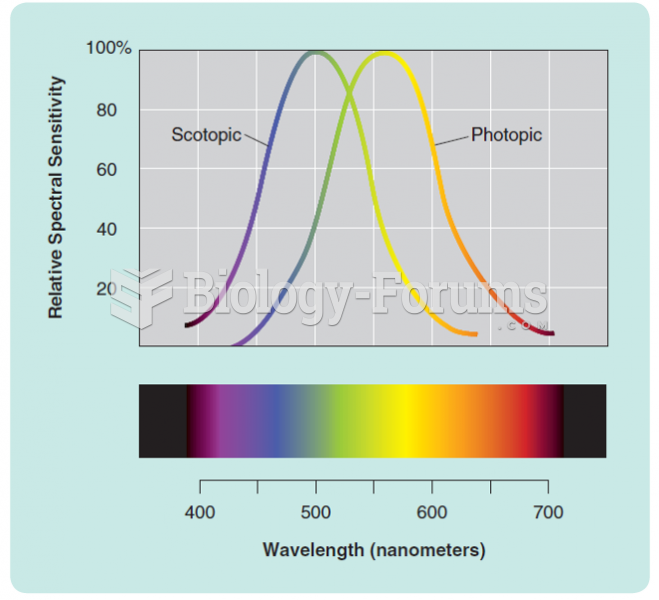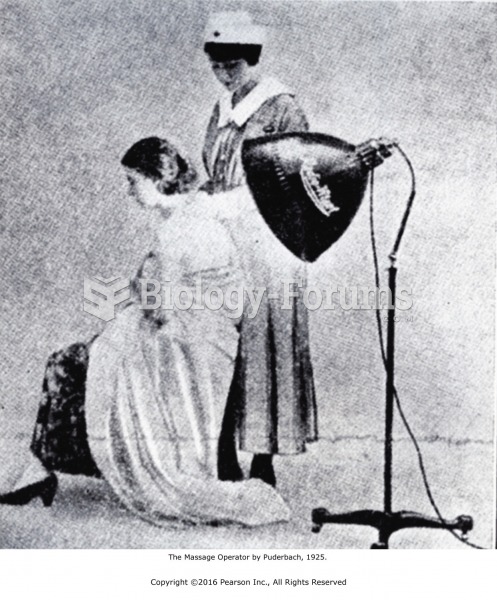|
|
|
Nearly 31 million adults in America have a total cholesterol level that is more than 240 mg per dL.
Approximately one in four people diagnosed with diabetes will develop foot problems. Of these, about one-third will require lower extremity amputation.
Intradermal injections are somewhat difficult to correctly administer because the skin layers are so thin that it is easy to accidentally punch through to the deeper subcutaneous layer.
People with alcoholism are at a much greater risk of malnutrition than are other people and usually exhibit low levels of most vitamins (especially folic acid). This is because alcohol often takes the place of 50% of their daily intake of calories, with little nutritional value contained in it.
Interferon was scarce and expensive until 1980, when the interferon gene was inserted into bacteria using recombinant DNA technology, allowing for mass cultivation and purification from bacterial cultures.
 On the slopes of Chimborazo, a 6,310 m high volcanic peak in the Andes Mountains of Ecuador, Alexand
On the slopes of Chimborazo, a 6,310 m high volcanic peak in the Andes Mountains of Ecuador, Alexand
 (A) The male pelvis (android) is shaped like a funnel, forming a narrower outlet than the female. (B
(A) The male pelvis (android) is shaped like a funnel, forming a narrower outlet than the female. (B





